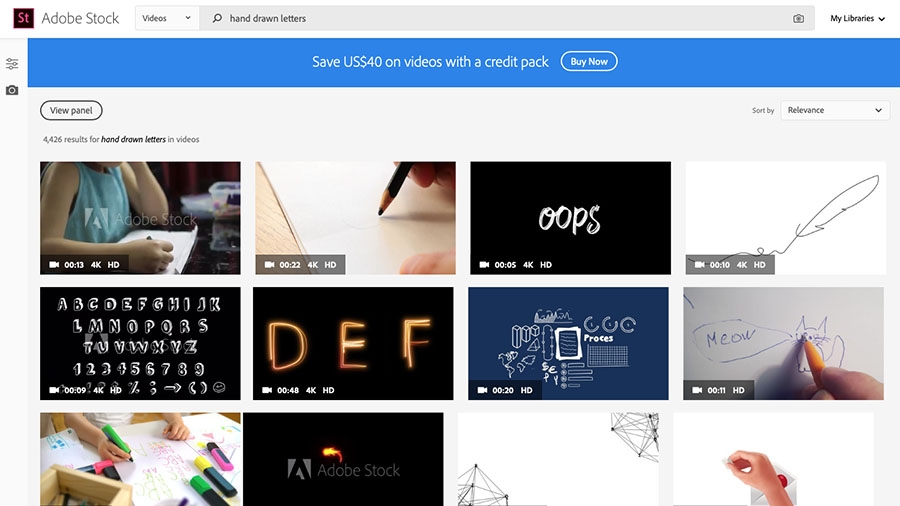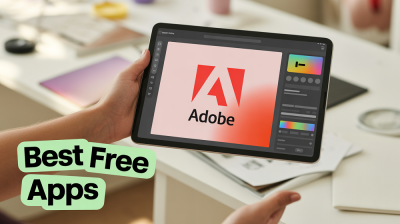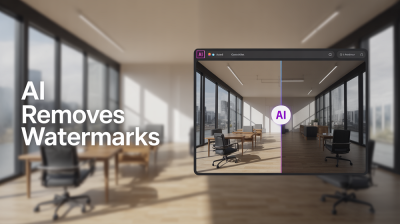Adobe Stock is a treasure trove for designers, offering millions of high-quality assets like photos, illustrations, videos, and templates. If you're looking to elevate your website design, tapping into Adobe Stock can provide the creative spark you need. You might wonder why you should consider
Benefits of Using Adobe Stock in Website Design

When it comes to website design, a picture is worth a thousand words, and using Adobe Stock can dramatically enhance your visual storytelling. Here are several compelling benefits of incorporating Adobe Stock into your design projects:
- Extensive Library: With over 200 million high-quality assets, including photos, vectors, and videos, Adobe Stock offers a diverse array of content, making it easier to find the perfect asset that aligns with your vision.
- Seamless Integration: If you're using Creative Cloud applications like Photoshop, Illustrator, or InDesign, you’ll appreciate how Adobe Stock integrates directly into these tools. You can search for and import assets without leaving your design workspace.
- License with Ease: Adobe Stock provides clear licensing options, allowing you to use assets legally for your projects. With its straightforward licensing terms, you can confidently focus on enhancing your designs rather than worrying about copyright issues.
- Quality Assurance: The quality of assets on Adobe Stock is consistently high, thanks to a rigorous selection process. This means you’ll find visually stunning images that elevate your website’s professionalism.
- Flexible Subscription Plans: Adobe Stock offers various pricing plans, including pay-per-image or monthly subscription options, catering to different budgets and usage needs. Whether you're a freelancer or a large agency, there's a plan that fits your workflow.
- Built-in Collaboration Tools: Adobe’s collaboration tools allow teams to work seamlessly together. You can share assets, leave feedback, and manage projects effectively, whether you're working remotely or in-house.
In conclusion, incorporating Adobe Stock into your website design process not only streamlines your workflow but also significantly enhances the visual appeal of your site. With a vast library of assets, seamless integration, and flexible pricing, it's a valuable resource for anyone serious about creating engaging and effective web designs. Ready to elevate your project? 💻✨
Also Read This: Sonic Surge: Strategies to Blow Up on SoundCloud – Boost Your Musical Presence
3. Getting Started with Adobe Stock

Alright, now that you’re excited about the possibilities Adobe Stock offers, let’s dive into how to get started! Using Adobe Stock is fairly straightforward, even if you’re new to design. Here’s a step-by-step guide to help you navigate through the process:
Step 1: Create an Adobe Account
If you don’t already have an Adobe account, you’ll need to create one. Head over to the Adobe website, and click on “Get Started.” You can either sign up with your email or use a social media account. It’s super easy!
Step 2: Explore Subscription Options
Adobe Stock offers various subscription plans, so choose one that suits your needs. Whether you need just a few assets or are planning to incorporate a lot for multiple projects, there’s a plan tailored for you:
- Single image purchase: Good for occasional users.
- Monthly subscriptions: Ideal for regular design work.
- Annual plans: Best for consistent usage, offering more bang for your buck.
Step 3: Familiarize Yourself with the Interface
The Adobe Stock interface is user-friendly. Dive in and explore! There are sections for photos, videos, illustrations, templates, and 3D assets.
Step 4: Download Adobe Stock App
If you’re working on designs frequently, consider downloading the Adobe Stock app. This enables you to browse and access assets anytime, on any device. Plus, the integration with other Adobe products like Photoshop and Illustrator is a game-changer!
Once you’ve set everything up, you’ll be all set to start searching for the incredible images and assets available at your fingertips. So, let’s move on to the next exciting part!
Also Read This: How to Create a Behance Page for Your Creative Portfolio from Scratch
4. Searching for the Right Images and Assets
Finding the perfect images and assets on Adobe Stock can feel overwhelming at times, especially with the vast library at your disposal. However, once you master a few strategies, you’ll find the search process becomes intuitive and efficient. Here are some tips to help you search like a pro!
1. Use Specific Keywords
When you’re looking for images, think about the most relevant keywords. Be specific! Instead of searching for “dog,” try “golden retriever playing in park.” This simple tweak can yield much more relevant results.
2. Utilize Filters
Adobe Stock offers various filters to refine your search. You can filter by the type of asset (photos, vectors, videos), orientation (landscape, portrait), color, and even the license type. This can dramatically narrow down your options to what you really need.
3. Explore Collections
Adobe Stock often curates collections based on themes or trends. Check these out when you’re feeling a bit stuck or simply want inspiration. Collections can introduce you to styles or concepts you hadn’t considered!
4. Check Similar Images
If you do find an image you love, look for the “Similar Images” feature. This will help you discover images that are visually compatible or thematically similar, saving you time and effort in your search.
5. Save for Later
While searching, you might find several images and assets that catch your eye. Don’t hesitate to use the “Save to Collections” feature! This allows you to create a mood board or shortlist to come back to later.
Remember, the right image can elevate your website design, making a significant impact on user engagement and experience. So take your time, explore, and enjoy the process!
Also Read This: How to Create Stunning Brochures with VectorStock
5. Licensing and Usage Rights for Website Design
When using Adobe Stock assets for your website design, it's crucial to understand the different types of licenses and usage rights available. This knowledge not only helps you avoid legal issues but also ensures that you’re using the images, videos, and templates appropriately.
Adobe Stock primarily offers two types of licenses:
- Standard License: This license allows you to use the asset for most personal and commercial projects, such as web design, social media posts, and marketing materials. However, there are some limitations, particularly regarding the maximum number of copies in circulation and the usage of the assets in merchandise.
- Extended License: If you plan to use the asset in a way that exceeds the scope of the standard license—like incorporating it into merchandise for sale—this is the option you need. The extended license grants broader usage rights without those pesky limitations.
Before you download anything, make sure you read the specific licensing agreements. Familiarizing yourself with these terms protects you from potential copyright infringements. Some key points to consider include:
- Attribution: Most Adobe Stock assets don't require attribution, but it's a good practice to credit the creators wherever possible.
- Commercial Use: Ensure that the items you select are suitable for the type of project you have in mind, especially if you're aiming for a more commercial application.
- Limitations: Pay attention to limitations regarding the number of copies and the context in which you can use the assets. For instance, using a standard license image on a high-traffic website may require you to upgrade to an extended license.
By understanding and adhering to these licensing terms, you can utilize Adobe Stock assets without worrying about crossing any legal boundaries, helping you focus on what really matters: creating beautiful and effective website designs!
Also Read This: Adobe Stock Images Without Watermark: How to Get Them Legally
6. Integrating Adobe Stock into Your Design Workflow
Integrating Adobe Stock into your design workflow can significantly streamline your creative process. Knowing how to do this effectively can enhance your productivity and improve the overall quality of your designs. Let's take a look at some strategies that can help you seamlessly incorporate Adobe Stock into your existing workflow.
Here’s a simple roadmap to follow:
- Set Up Your Adobe Creative Cloud: Ensure that your Adobe Creative Cloud is up to date. Adobe Stock integrates smoothly with applications like Photoshop, Illustrator, and InDesign, allowing you to access stock assets directly from within these programs.
- Organize Your Assets: Make use of libraries in Adobe Creative Cloud to keep your selected stock assets organized. Create folders for different projects or themes. This will save you time when you're in crunch mode.
- Use Creative Cloud Libraries: With Creative Cloud Libraries, you can save your selected Adobe Stock assets and access them anytime, anywhere. This makes it easy to switch between devices or collaborate with teammates without losing track of your resources.
- Utilize Search Filters: Take advantage of Adobe Stock’s powerful search filters to find exactly what you need. Whether it's photos, vectors, or templates, you can customize your search based on orientation, color, and even contributor rating.
- Preview Assets: Always use the preview option before finalizing your assets. This feature allows you to see how an image or graphic will look within your design context without having to purchase it upfront.
By incorporating these strategies, you can make Adobe Stock a vital part of your design workflow. Not only does it provide you with high-quality assets, but it also fosters a more efficient design process, allowing you to deliver impressive results faster. So go ahead, embrace the power of Adobe Stock and watch your designs transform into something special!
Also Read This: Access Getty Images Without Watermark in 2016
7. Best Practices for Selecting Visuals
Choosing the right visuals for your website is crucial in capturing attention and conveying your brand message effectively. Here are some best practices to keep in mind when selecting images or graphics from Adobe Stock:
- Know Your Audience: Understand who your website is aimed at. The visuals you choose should resonate with your target demographic. For instance, vibrant and youthful images might appeal to a younger audience, while more subdued, professional visuals could attract corporate clients.
- Brand Consistency: Ensure that the visuals reflect your brand’s identity. Stick to a color palette, style, and tone that align with your brand. This consistency reinforces your brand image and helps in building a cohesive look throughout your website.
- Quality Over Quantity: It might be tempting to fill your site with a variety of images, but it’s more important to choose high-quality visuals that enhance your content. Adobe Stock provides high-resolution options that can elevate your website’s professional appearance.
- Context Matters: Select images that complement your text and overall message. A good visual should enhance the story you are telling rather than distract from it. Always think about how the image fits within the surrounding content.
- Diversity and Inclusion: Be mindful of representing diverse groups in your visuals. Not only does this promote inclusivity, but it also shows that your brand values all customers.
- Optimize Image Use: Large images can slow down your website. Always optimize images for web use to ensure fast load times. Adobe Stock offers tools to help with this, ensuring you maintain quality while optimizing performance.
- Stay Current: Visual trends change frequently. Regularly browse Adobe Stock to discover new styles and themes that align with current trends and keep your website feeling fresh and modern.
By following these practices, you can leverage Adobe Stock to enhance your website’s design, making it visually appealing and effective at engaging your visitors.
Also Read This: Steps to Create an Account on Behance and Launch Your Creative Profile
8. Case Studies: Successful Websites Using Adobe Stock
To inspire your creative process, let’s take a look at a few case studies of successful websites that effectively utilized Adobe Stock to elevate their design:
Case Study 1: Modern E-commerce Store
A popular online clothing retailer revamped its website to improve user experience and visual appeal. By sourcing high-quality product images and lifestyle shots from Adobe Stock, they created a vibrant homepage that showcased their latest collection effectively. The result? A significant increase in click-through rates and sales conversions.
Case Study 2: Tech Startup Landing Page
A tech startup aimed for a clean and crisp look for its landing page. They chose minimalistic, high-resolution visuals from Adobe Stock that reflected innovation and forward-thinking. This helped convey their brand’s mission and values. After integrating these visuals, they reported improved engagement, with more users signing up for their newsletter.
Case Study 3: Nonprofit Organization Website
A nonprofit organization utilized Adobe Stock to find powerful images that communicated their mission of environmental conservation. By selecting heartwarming images featuring diverse communities engaging with nature, they created a compelling narrative on their site. This led to increased donations and volunteer sign-ups, showcasing the impact of the right visuals.
These case studies illustrate how various brands leveraged Adobe Stock’s extensive library to create visually stunning websites that captivate their audience and achieve their goals. Whether you’re running an e-commerce site or managing a nonprofit, Adobe Stock offers the resources you need to make your website stand out.
Conclusion and Final Tips for Designers
As we wrap up our exploration of using Adobe Stock for effective website design, it’s clear that leveraging high-quality images and assets can significantly enhance your projects. Here are some final tips to make the most out of Adobe Stock:
- Quality Over Quantity: Always choose images that resonate with your brand identity. A few striking images are often more impactful than a multitude of mediocre ones.
- Utilize Collections: Create collections of images and assets related to specific projects. This helps in maintaining consistency and speeding up your workflow.
- Explore Premier Content: Don’t overlook the premium assets available. High-quality videos and templates can elevate your design to the next level.
- Stay Updated: Regularly check for new content and trends in Adobe Stock. Staying abreast of current styles can keep your designs fresh and relevant.
- Customize Your Selections: Don’t hesitate to tweak and modify stock images to fit your design vision. Adobe’s editing tools can help you tailor assets specifically for your needs.
In conclusion, Adobe Stock is a powerful resource for designers looking to enrich their website projects. By thoughtfully integrating its vast library of images and assets, and following these tips, you can create visually stunning and impactful designs that captivate your audience. Embrace creativity and let Adobe Stock fuel your design journey!
 admin
admin








